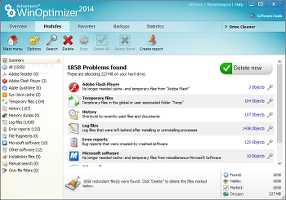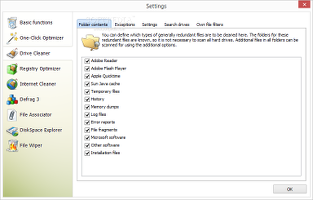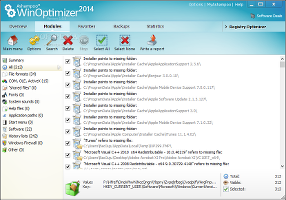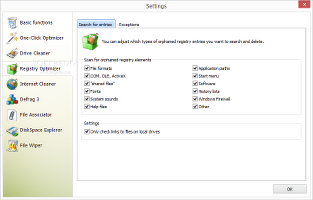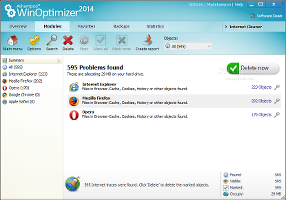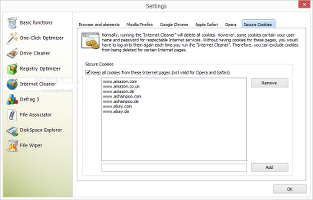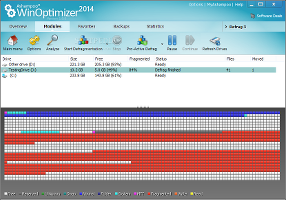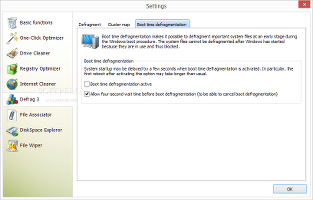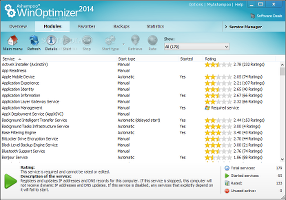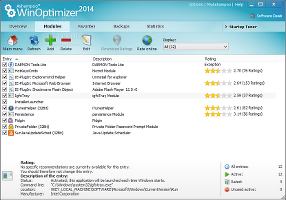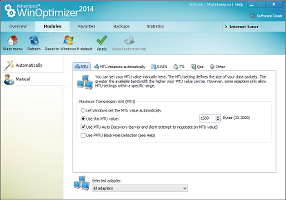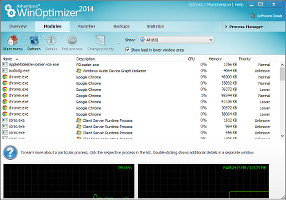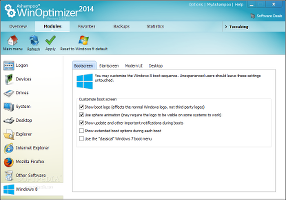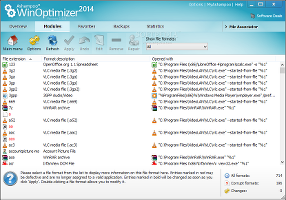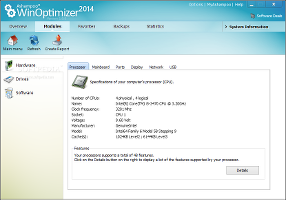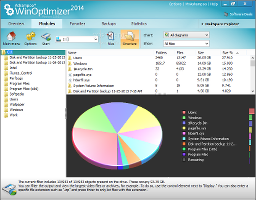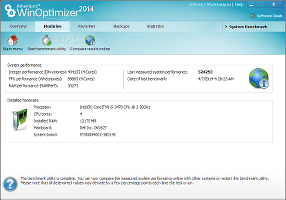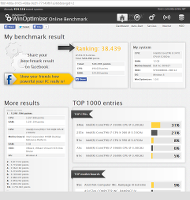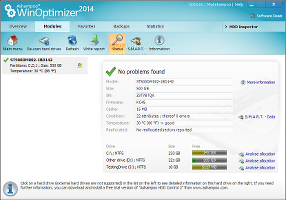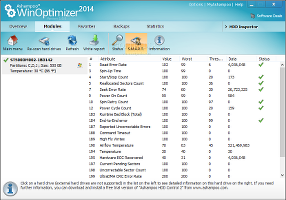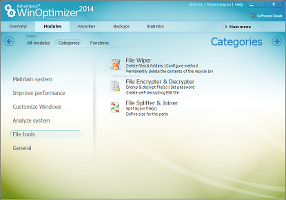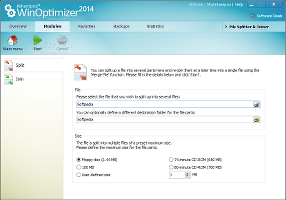System maintenance tools are not miracle workers but they can definitely ease users' jobs at finding workarounds to resolve frequent Windows issues without resorting to the ultimate solution: reinstalling the OS.
Ashampoo WinOptimizer 2014 bundles a wide range of boosting, tweaking, analysis, and general care tools for keeping PCs in shape. While novices can resort to one-click optimization and other automated tasks, power users may configure each part of the modules and evaluate information at the end of each job.
The trial version runs for 10 days and does not impose any limitations. The full package can be purchased for €29.99 / $41.53 (available for 1 year).
Installing the application suite takes minimal effort. However, since it is ad-supported, users should be careful when going through the setup steps, as WinOptimizer offers to download and install third-party components that it does not need to work normally.
The interface has a clean appearance and organized structure, where the “Overview” section provides one-click access to running scans for the cleaning, optimization, and protection modules, showing total number of issues and size for each of them. Initially it is necessary to answer several questions to optimize settings, which pertain to SSD drives, hibernation, Windows indexing service, and old update backup files.
There are numerous tweaking modules integrated by WinOptimizer. The Drive Cleaner looks into unnecessary files to remove from the hard disk and free up valuable space. They cover Adobe Reader and Flash Player, QuickTime, Java cache, temporary files, history, memory dumps, log files, error reports, file fragments, installation files, along with Microsoft and other software. Users have the possibility to create an exclusion list of files and folders, ask the tool to ignore write-protected files when scanning and send items to the Recycle Bin instead of permanently deleting them, look into any selected drives for temporary, backup, general backup, thumbnail preview, and other types of files, as well as make a list with the file formats to take into account for scanning.Scan results show the name, extension, full path, and size for each file prone to deletion. Apart from handpicking the exact items to remove and the ones to keep, it is possible to define selected files, file names, or folders of selected files as exceptions.
The Registry Optimizer component aims to identify and remove any registry entries that are no longer associated with anything, in an attempt to boost overall PC performance. It looks into file formats, ActiveX, COM and OLE objects, shared DLLs, fonts, system sounds, help files, application paths, the Start menu, software, history lists, Windows Firewall, and others.
Once the scan is done, WinOptimizer shows the description and full path for each issue and lets users ignore selected entries from future runs until further notice. Registry backups are automatically created by the app before modifying any entries, in case Windows starts experiencing issues afterwards. These can be later managed from a separate part of the app.The Internet Cleaner searches for junk files in the installed web browsers and removes any traces of user activity, which particularly comes in handy when multiple users share a PC. It offers support for Internet Explorer, Mozilla Firefox, Opera, Google Chrome, and Apple Safari. The browsers should be closed in order to be scanned.
WinOptimizer evaluates browser cache data, cookies, the history list of visited pages and manually entered URLs, stored form data, saved icons of visited sites, and so on. User-defined cookies can be kept on the disk to preserve login accounts on trusted websites.The defragging tool offers three types of defragmentation (fast, normal, and intelligent), ranging from the quickest but least effective method to the slowest, yet most thorough. An initial analysis on a selected drive shows the percentage of fragmentation, total files and moved items, along with the program's recommendation on whether a defragging procedure should be performed or not. Similar to most defragging apps, WinOptimizer displays a cluster map too.
Activating proactive defragmentation mode basically greenlights the program to keep track of all file operations in real-time mode and defrag items when there are enough resources available. WinOptimizer also implements a boot-time defrag method that handles Windows files at startup that cannot be otherwise accessed, since they are used by the OS.The program's components dedicated to system improvement include startup and Internet tuners together with service, process, and uninstall managers. The service manager loads a list with all active services that can be turned on and off, showing their start type (manual, automatic, delayed start), status, and rating based on the community's opinion. Double-clicking an item reveals additional information, such as thorough description, services that depend on it, and services it depends on. Furthermore, all services can be rated by different criteria (e.g. not rated, running).
The startup tuner lets users disable apps that automatically run at system startup to speed up Windows boot time, edit their settings, as well as add new ones if necessary. Similar to the service manager, it shows a description and community-based rating for each object and enables users to sort apps by type (e.g. plugins, registry entries). The Internet connection may be automatically optimized by selecting the network name and interface, while advanced users can manually specify settings for the Maximum Transmission Unit (MTU), RWIN, TTL, Quality of Service (QoS), and others. As far as the process manager is concerned, it is possible to sort items by type (critical system, other system or user processes, or services), modify their priority level, as well as terminate processes. The uninstall manager is no different than the one built into Windows.Moving on to the Windows customization category, there are numerous tweaks that can be applied to the OS. They focus on the logon behavior (e.g. logon screen, welcome message), devices (e.g. network, mouse, keyboard), drives (e.g. hide drives, reserve space for MFT), system (e.g. default Windows folders like My Documents, OEM information), desktop (e.g. Aero interface in Windows 7, items to display on the desktop), Windows Explorer (e.g. User Account Control, hibernation), Windows 8 (e.g. boot screen), and so on.
Additionally, WinOptimizer allows users to manage file associations and point out the file types to include in the predefined sorting categories (images, videos, audio, documents, custom), as well as to save the position of current icons on the desktop, in order to return to it at a later time. However, the latter option applies only for moved items (for example, deleted shortcuts are not taken into account). System analysis tools revolve around hardware specs (processor, mainboard, port, display, network, USB), drives and devices, along with software (Windows, software, memory, drivers). Any of this information can be generated into an HTML report for closer inspection. Meanwhile, DiskSpace Explorer evaluates the hard disk and lists the largest files and folders, featuring pie and bar charts. Running a benchmark utility determines a system performance score based on the integer, FPU, and RAM. Optionally, the score can be sent to the developer's database to calculate a ranking by taking into account other workstations shared by Ashampoo consumers. The last system analysis function, HDD Inspector, looks closely at the hard disks to determine their health status, such as temperature and reallocated sectors. It also reveals S.M.A.R.T. attributes and lets users create plain text reports.As for file operations, WinOptimizer integrates utilities for encrypting and decrypting files with a password to deny user access (with or without generating a self-decrypting executable), splitting files into smaller pieces to store on discs and then merging them, as well as for shredding files using 1, 3, 7, or 35 passes, in order to prevent specialized software from recovering private data.
Maintenance tasks can be scheduled on a one-time or recurring basis when it comes to defragging the hard disk or running One-Click Optimizer (comprised of the Internet Cleaner, Drive Cleaner, and Registry Optimizer).The Good
The last tab in the main frame shows overall statistics when it comes to the registry database, database entries, files, folders, and backups. Meanwhile, the maintenance components can be customized in terms of areas/types of items to scan. Beginners can resort to the default settings for system optimization.
CPU and RAM consumption was low during our evaluation, while commands were executed rapidly.
The Bad
A single skin is integrated for the interface.
The app is basically a lesser version of Ashampoo WinOptimizer 10, although the two are equally priced.
The Truth
NOTE: Softpedia and Ashampoo are giving away unlimited license keys for Ashampoo WinOptimizer 2014. One key works on unlimited PCs, has a lifetime availability, and does not have an expiration date for activation. All you have to do is access this landing page. The Easter promo expires on Monday, April 21 at 15:00 UTC (8:00 a.m. PDT/PST), so make sure to claim it by then.
UPDATE: Giveaway over.
 14 DAY TRIAL //
14 DAY TRIAL // 
